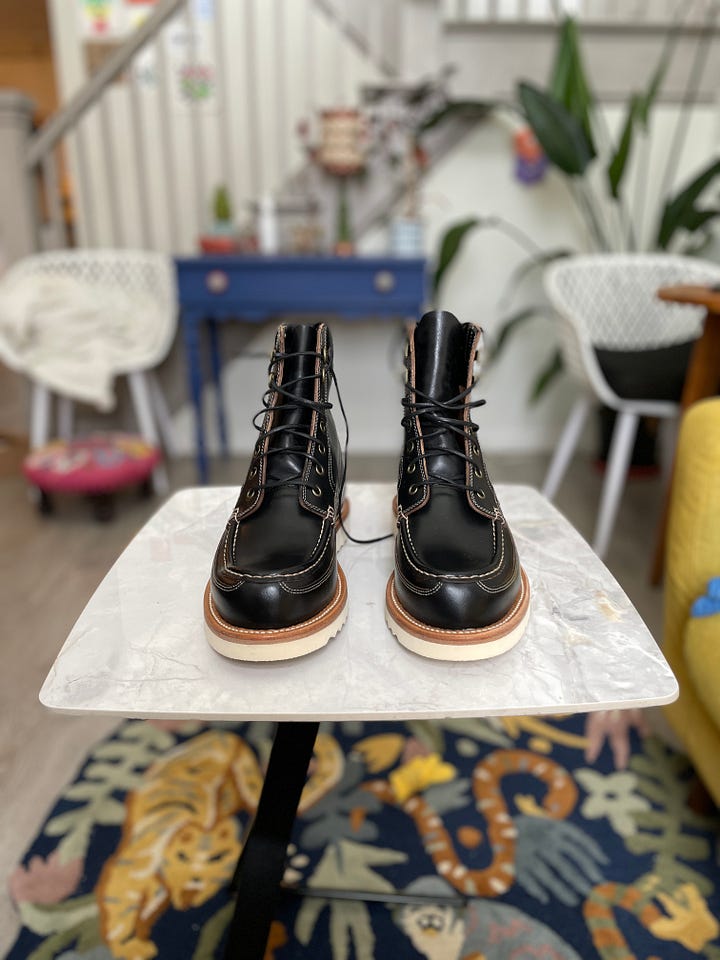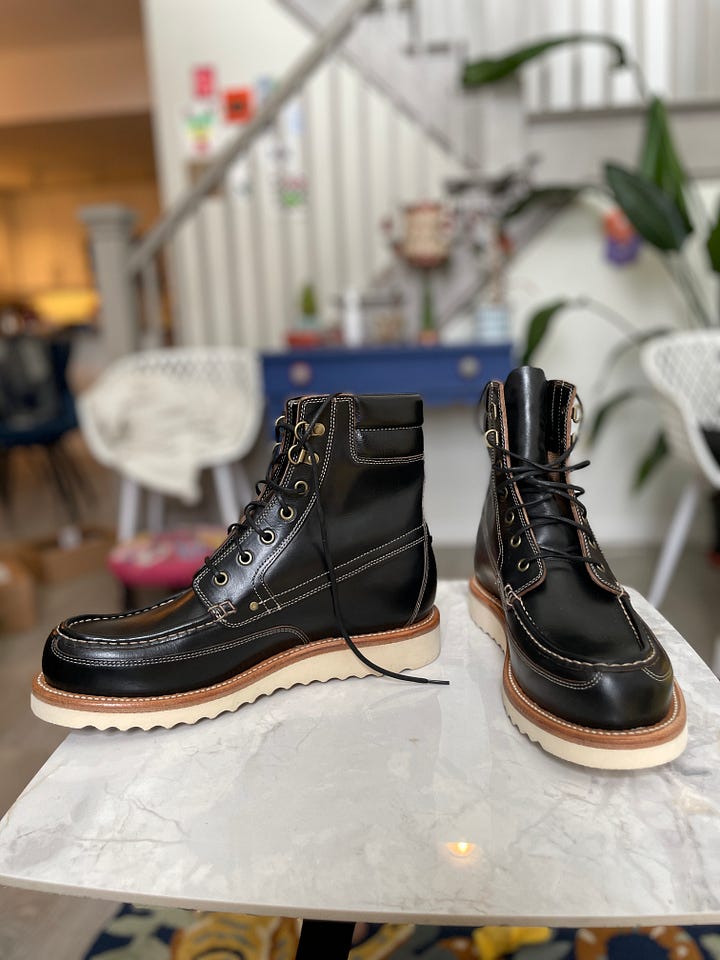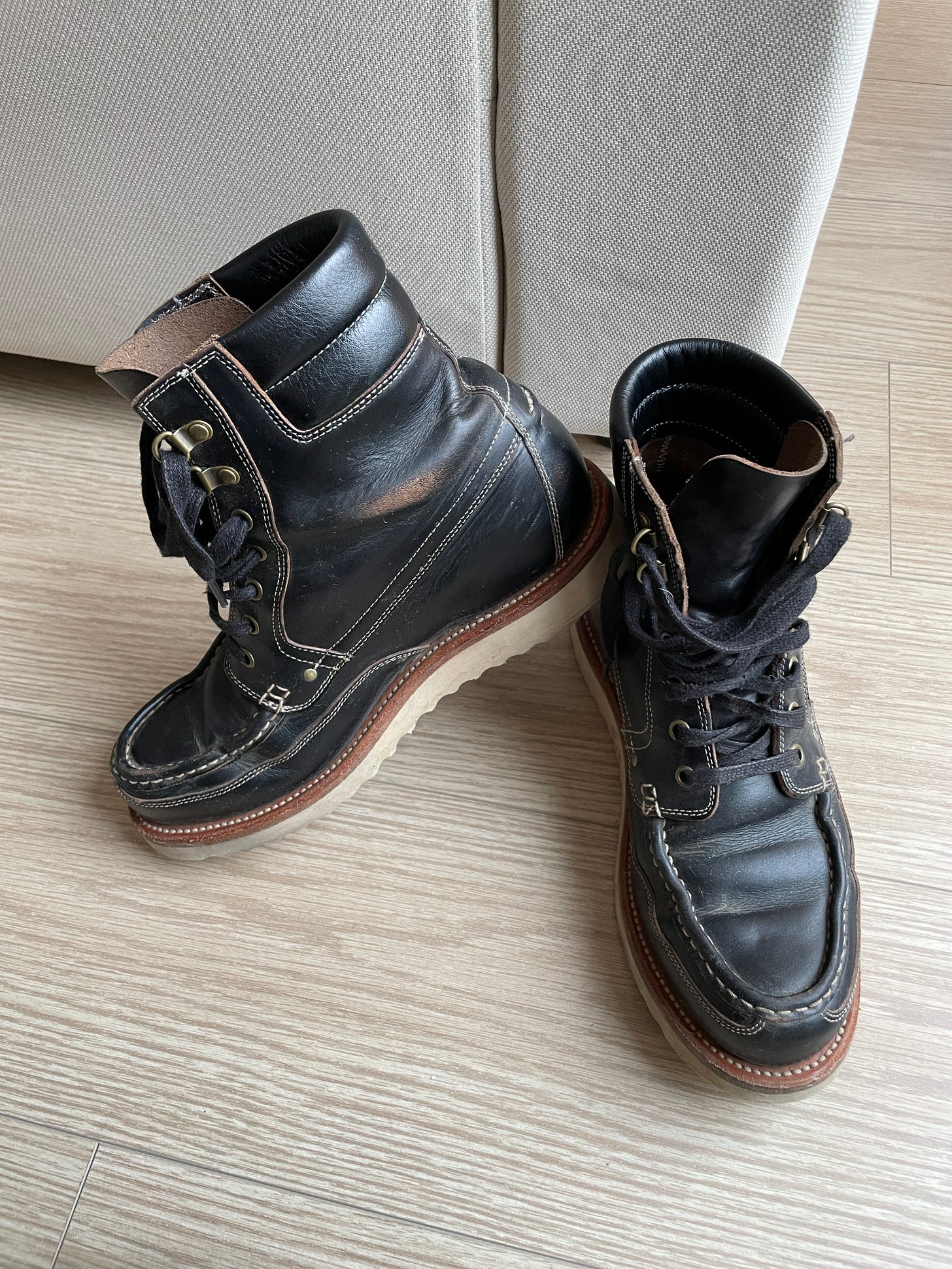02 - A Quick Guide to Breaking in High-End Leather Boots
All Gain, No Pain (Okay, maybe some pain)
I LOVE unboxing new boots. The smell of leather is exciting, intoxicating. Too often, though, it’s also the smell of pain, blisters, and sore feet. But it doesn’t have to be.
As long as your new pair is the correct size for you, breaking in shouldn’t require too much effort.
Before we talk about that, though, let’s get a few misconceptions out the way.
Pain is NOT normal
New shoes and boots should never hurt your feet.
Quality leather boots should feel snug but not painful right out of the box. The idea that you must endure the agony of blisters, pinched toes, and the dreaded heel slip for the sake of style is completely, utterly false.
Do yourself a favor and return the pair if this is happening.
You DON’T need to soak them in water
Seriously, don’t.
Yes, water does make leather more pliable. This is called “wet molding” technique, and leatherworkers use it to create complex three-dimensional structures from leather. You are not a leatherworker, and your feet are not workshop-grade molds.
Water weakens leather fibers, can cause discoloration, and can lead to cracking over time if the leather hasn’t been properly taken care of after molding. So, don’t risk it.
You don’t need to wear the new boots nonstop
Wearing new leather boots all day, every day, only leads to unnecessary pain and potential long-term damage to both your feet and the boots. Leather needs time to adjust and recover. Your feet do, too.
Take it easy and wear the new boots for a maximum of 3-4 hours a day during the first week.


Now let’s get into the meat of this guide.
How to break in leather boots
#1 Get the fit right
Before breaking in your boots, make sure they’re the right size. High-quality leather will stretch and conform to your foot over time, but this doesn’t mean you should start with a pair that’s too tight. Your boots should feel snug but not constricting, with enough room for your toes to wiggle: usually about 1 inch or 2.5 cm in front, and 1/4 inch or 0.5 cm on the sides.
#2 Wear thick socks
For the initial wears, pair your boots with thick or double-layered socks. This ensures extra cushioning and helps stretch the leather gently. It’s a great way to reduce friction and avoid blisters.
Any thick socks will do, but I like Danish Endurance, which you can easily find on Amazon.
#3 Aim for gradual wear
Ease into wearing your new boots. Start with short periods, such as 30 minutes to an hour a day, and gradually increase the duration. This allows the leather to adapt to your foot’s shape without causing discomfort.
Pro Tip: Wear them inside first
Always start the break in period by wearing boots at home, because footwear with visible signs of wear (dirty, scraped outsoles) cannot be returned.
#4 Condition the leather
This is not optional. Conditioners soften and nourish the leather and help it become more pliable and comfortable. Apply a small amount of conditioner to the inside and outside of your boots before wearing them for the first time.
My go-to brand is Bick 4, because it doesn’t darken the leather. Other footwear enthusiasts swear by Venetian Shoe Cream. (Note to self: write a post about leather conditioners.)
Pro Tip: Condition conservatively
Conditioning is necessary, but it’s also easy to overdo. In fact, over-conditioning can decrease leather lifespan and lead to cracking.
I recommend you avoid conditioning the boots for the first 2 months. The leather simply doesn’t need it yet. I condition my boots and shoes about every 2 months.
#5 Get shoe trees
After wearing your boots, insert cedar shoe trees to help them maintain their shape and absorb moisture. Not only this aids in the breaking-in process but also extends the life of your footwear.
#6 Consider stretching if the tightness persists
If certain areas feel tight, a quality boot stretcher can work wonders. These devices apply even pressure to specific areas, helping to stretch the leather without compromising its structure.
#7 Be patient
It can take anywhere from a few days to a few weeks for your boots to feel truly comfortable, depending on the type of leather.
So, keep wearing them. Eventually the boots will adapt to your feet and gait, creating a comfortable fit.
A word about patina
Whether you purchased service boots, Pacific Northwest logger style boots, or dress boots, they all have one thing in common: vegetable tanned leather.
And the thing about vegetable tanned leather is that it’s “alive”: it ages and changes its color with exposure to elements. With age come not only discoloration but also scratches and scuffs, which will buff over with enough wear.
Eventually, your boots will develop a patina, which will be as unique as you are.
For me, this wabi-sabi character that high-quality footwear gains over time is one of its biggest appeals, because each crease, scuff, and discoloration reflects the life I led and the miles I walked.

About Kōbō Mono
Kōbō Mono is a blog about quality boots and shoes.
It’s currently run by one person: me. (Talking about myself in a third person has never felt more odd.)
It’s a place to connect with the fellow footwear enthusiasts, share what I work on, and build a community.
If you like what you read here, please consider subscribing or sharing this post with friends. Your help will go a long way 🙏
And since we’re at it, I want you to know that my long-term dream is to start a shoe company. We’ll see how that goes.
You can read more in the About section here: https://kobomono.substack.com/about
